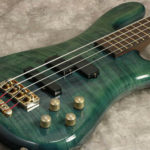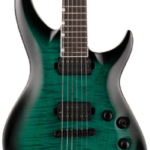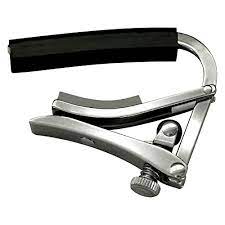
A good guitar capo is integral to acoustic guitar life. The ability of capos to recreate luscious open chords in new keys is critical to the acoustic guitar’s versatility.
If an artist wants to move the song up a key, he can simply capo up a whole step and keep all the fingerings, and sounds of the chords the same.
Strap Capos
If you were to lay your index finger across all six strings at fret two and press down hard enough so that all the notes at fret two sounded clearly on each string, that technique would be called a “barre.” This barre technique is used by guitarists all the time, but if you are just beginning you may not have tried it yet and when you do, it will take a few weeks to master. Attaching a capo is a much easier way to achieve the same result. You could say that the capo produces a permanent barre at a specific fret. Now let’s look at what exactly happens when you have a capo attached to your guitar.
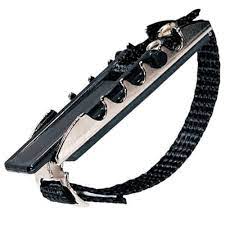
Strap Capos
Strap capos do what their name implies – they attach to the guitar neck via a strap. The capo is nothing more than a bar with an elastic or adjustable strap attached to it. They are easy to use,.inexpensive,.and easy to slide up and down the neck. Straps wear out, especially elastic ones. They may slip around in position, which affects intonation.
Toggle Capos
Toggle capos are similar to the strap capos. In order to tighten the strap, you pull a toggle that snaps the capo tight. It locks like a latch on a toolbox. Toggle capos are inexpensive but the toggle mechanism can bring the strings out of tune.
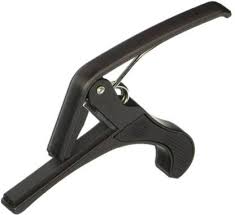
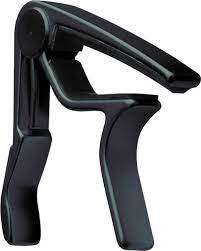
Trigger Capos
Trigger capos function just like the “chip clip” you put on your bag of Doritos. You press the clamp, place over guitar neck, and release, allowing the capo to clamp down on the neck. These are very popular, and easy to use. They move quickly, which helps in “live” situations. Trigger capos have a firm attachment, and last a long time. The design makes the capo apply pressure beginning on one string, then, the next, etc. Having all the tension exerted from one side of the fretboard, can make the throw off the intonation.
Spring Capos
Spring capos are just like the trigger capos, but use a slightly more sophisticated spring mechanism to apply pressure. They are easy to move with one hand. The direct spring is more solid than the clip style spring of the trigger capo. Intonation is still a problem because the tension is still coming from one side of the capo.
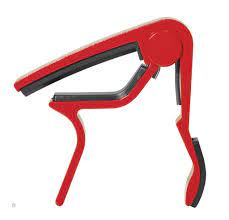
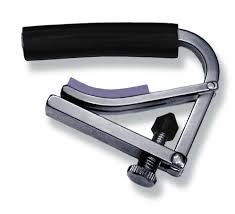
Adjustable Screw Capos
Adjustable screw capos have been around a long time. This capo operates by having a screw that you tighten down, applying pressure to the back of the guitar neck. This allows the screw to apply pressure evenly from the back. A good capo for recording or home practice. They are inexpensive but not easy to change position quickly.
Yoke-style Capos
Yoke-style capos are similar to adjustable screw capos. They both use a screw on the back of the guitar neck to apply pressure to tighten the capo. The yoke-style capo completly wraps around the neck. This allows the screw to apply pressure from dead center in the back of the neck. The front capo pad swings open using a hinge. It is more work to put on and take off, but once its on you can slide it around.
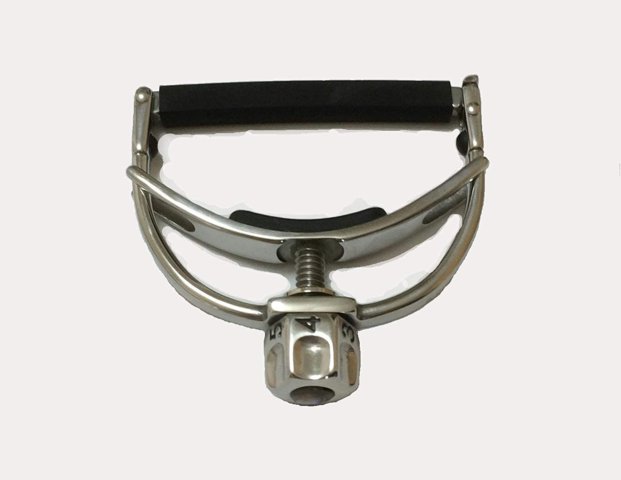
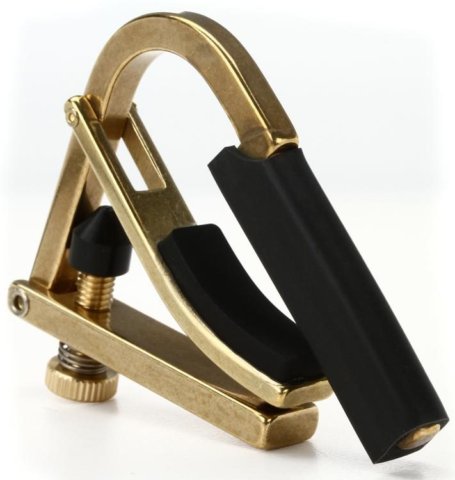
Partial Capos
Partial capos are also popular with acoustic guitarists using alternate tunings, or complicated chord voicings. The capo is typically a spring or adjustable screw style capo. It only has a short piece that clips to the fretboard, maybe covering 3 of the 6 strings.
Spider Capos
The Spider Capo allows you to capo each string individually, making hundreds of open string tunings possible without re-tuning your guitar. You can change tunings while playing, finger above and below the capo, play melodies with open string accompaniment, and explore unlimited creative possibilities.
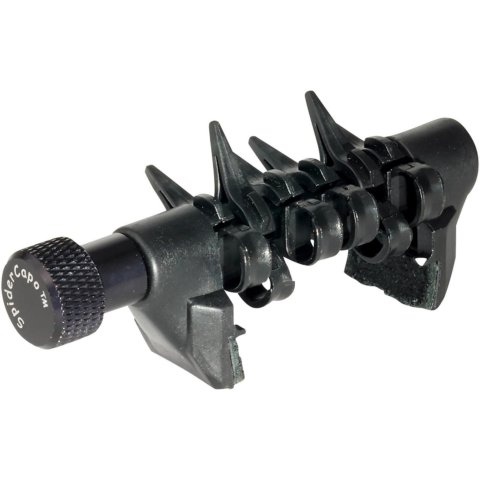
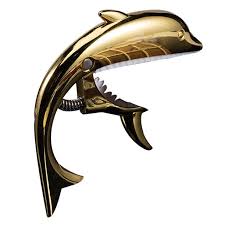
Unique Design Capos
There are a variety of unique designs for capos. There are creative custom designs and modern technological tension designs available.
Tuner Capos
These were designed for easier guitar playing, They are a 2 in 1 combination of a precision guitar capo, and a guitar tuner. Tuner capos are perfect for beginners, who may need extra accessories.
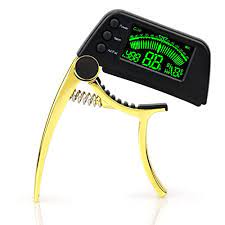
Whatever style you prefer, you need to make sure you order the right one for the type of guitar you have. If you order the wrong one, it won’t squeeze the strings correctly. A “steel string” guitar capo has a slight curvature to the part that lies across the fretboard, as the fretboard on a steel string guitar is slightly convex. A “nylon string” guitar capo is wider and very flat.
Although the capo can be a very helpful tool, try not to rely on it too much. It’s still very important to expand your knowledge of different chords on the guitar.
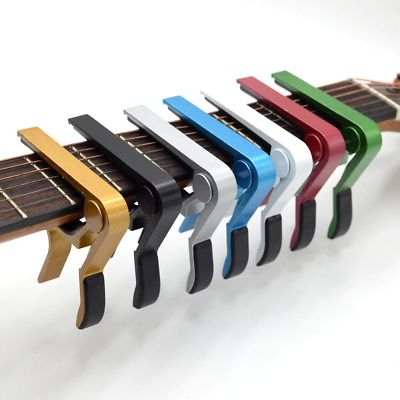
Guitar & Gear Articles
































